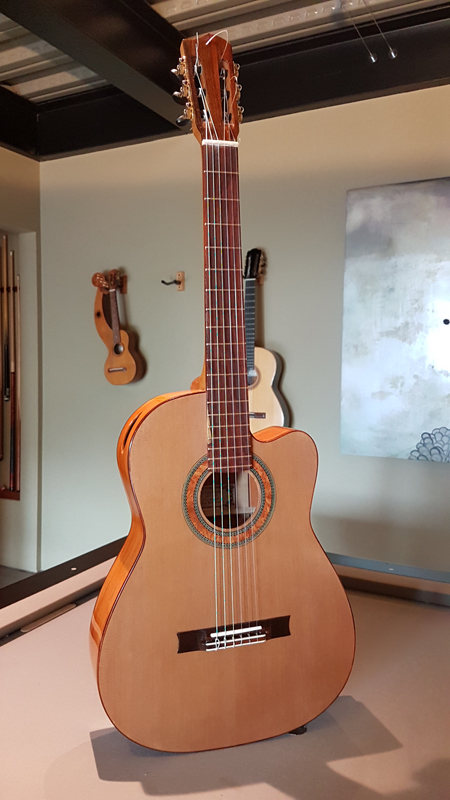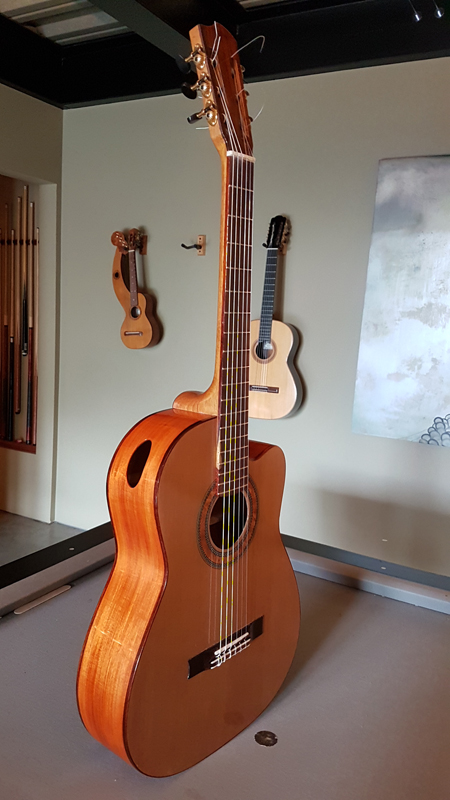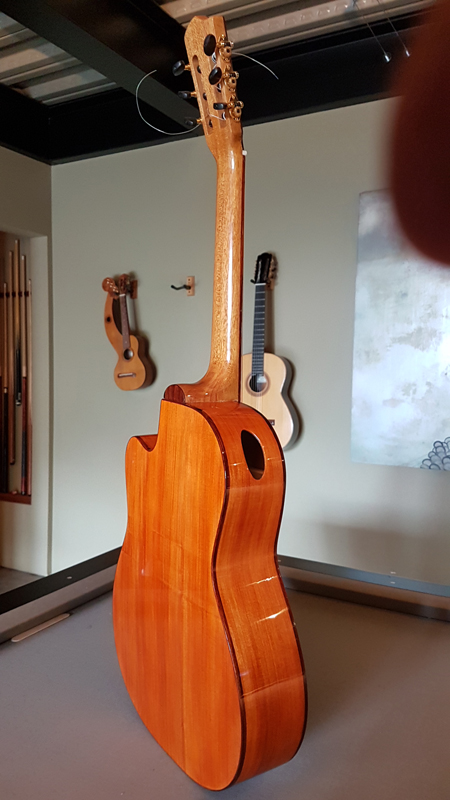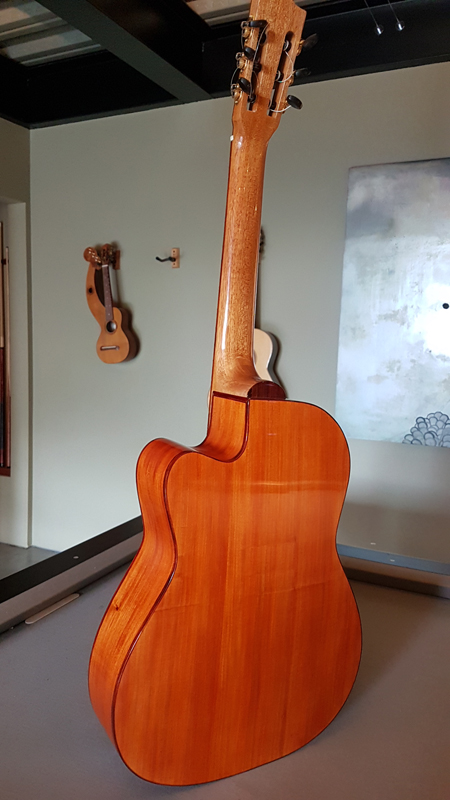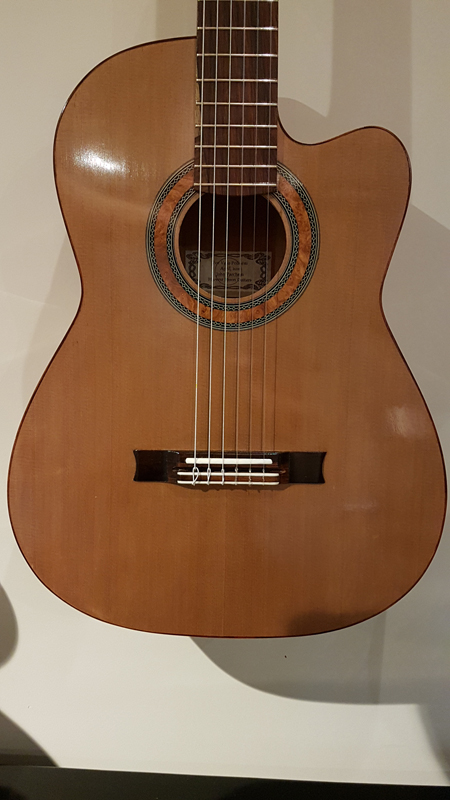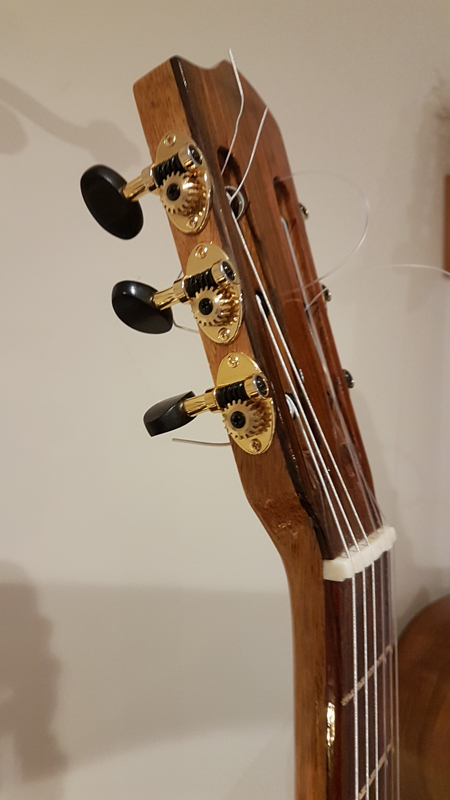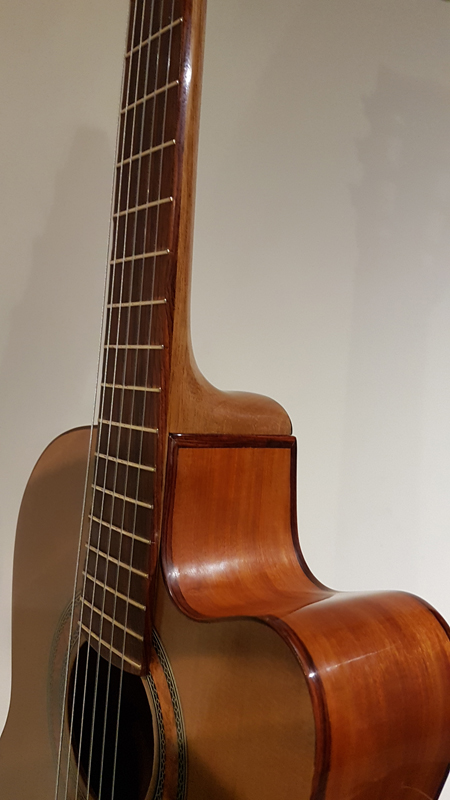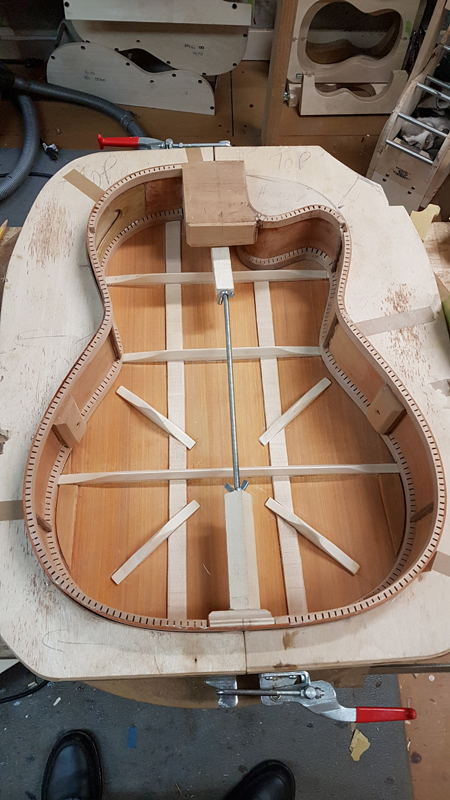My last complete instrument for a short time (I promise.) It is just that I had two going on and the scheduled Ukulele class. In any case this is a "Contemporary Classical" Guitar. I get it, an oxymoron. The basic body shape is a Hauser 37 with the cutaway added. The contemporary features are a bolt on\bolt off neck, compensated nut, 30' radiused top. 10' radiused back 24" radius fretboard, 49 mm nut, sound port and carbon fiber reinforced falcate braces.
Three piece Pernambuco back and sides
Western Red cedar top
Cocobolo Bindings and fretboard
Brazilian Rosewood headstock veneer
CF reinforced Brazilian Rosewood bridge
Traditional French Polish top with shellac
Amboyna Burl classical style rosette
Back and sides and neck sprayed with Post catalyzed Royal lac sprayed on Silvertip Epoxy with slow hardener pore fill.
Bright Gold with Ebony Schertler Classical Guitar Tuning Keys.
